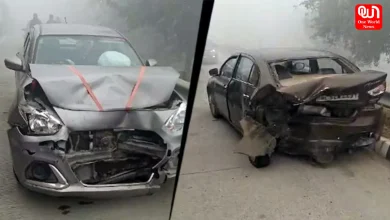“Landslide Chaos: 200 Tourists Stranded, No Rooms”
200 tourists Stranded left without accommodation due to landslide and traffic jam; community support crucial; lessons for disaster management.
Himachal Landslide Chaos: A Nightmare as 200 Tourists Stranded, No Rooms
A picturesque vacation turned into a nightmare for around 200 tourists stranded in the beautiful hill state of Himachal Pradesh when a devastating landslide struck, leaving them stranded and without accommodation. The incident created chaos, with a 15-kilometer traffic jam exacerbating the situation. In this article, we delve into the details of this unfortunate event and highlight the challenges faced by the stranded tourists.
The Landslide Catastrophe:
Himachal Pradesh, known for its stunning landscapes and scenic beauty, attracts numerous tourists each year. However, nature’s unpredictability unfolded as a massive landslide occurred, blocking a major road and isolating a large number of tourists in the affected region. The landslide, triggered by heavy rainfall and unstable terrain, not only disrupted travel but also resulted in an acute shortage of accommodation facilities, leaving the stranded tourists in a dire situation.
Stranded in a 15-kilometer Traffic Jam:
As news of the landslide spread, the affected area witnessed a tremendous influx of vehicles, leading to a colossal traffic jam spanning 15 kilometers. The standstill traffic further added to the misery of the stranded tourists, trapping them in their vehicles without access to basic amenities. The situation grew increasingly challenging as the hours passed, exacerbating concerns about food, water, and sanitation for those caught in the jam.
The Hunt for Shelter:

With hotel rooms already booked and no additional accommodations available due to the peak tourist season, finding shelter became an arduous task for the stranded tourists. Many were left to brave the elements, seeking refuge in makeshift arrangements or even spending the night in their vehicles. Local authorities and rescue teams worked tirelessly to assist the stranded tourists, providing temporary shelters and relief measures as the situation unfolded.
Community Support and Resilience:
In times of crisis, the resilience and support of local communities often shine through. The affected areas witnessed locals stepping up to provide food, water, and basic necessities to the stranded tourists. Additionally, volunteers, social organizations, and government agencies collaborated to arrange emergency shelters, medical aid, and transportation for those in need.
Read more-Cyclone Biparjoy: Power Outages, Heavy Rains lash India and Pakistan
Snow Snow on hills 700 Tourists & 200 plus vehicle stranded Near Atal Tunnel Manali Highway .. There has to be limit to number of tourists .. Is this #responsibletourism Is administration not aware as @Indiametdept updates #Himachal @dharamifs_HP @iPradeepSangwan @ParveenKaswan pic.twitter.com/omIRyaH6Rn
— Nisha rai (@nisharai_ggc) January 3, 2021
Lessons Learned and Precautionary Measures:
The landslide incident serves as a reminder of the vulnerability of tourist destinations to natural disasters. It underscores the need for improved disaster preparedness, infrastructure development, and contingency plans to address such emergencies effectively. Authorities must focus on early warning systems, regular safety audits, and coordination between various agencies to ensure the safety and well-being of both residents and tourists.
Read more:- Rising Death Toll in UP Heatwave: Hospitals Struggle to Cope

The landslide calamity in Himachal Pradesh, resulting in a 15-kilometer traffic jam and leaving 200 tourists stranded without accommodation, showcases the unforeseen challenges that can arise during vacations. This unfortunate event underscores the importance of disaster management, community support, and effective coordination between authorities and local communities to mitigate the impact of such natural disasters. As Himachal Pradesh continues to allure tourists with its enchanting landscapes, efforts must be made to prioritize safety and resilience, ensuring that every visitor’s experience remains enjoyable and secure.








